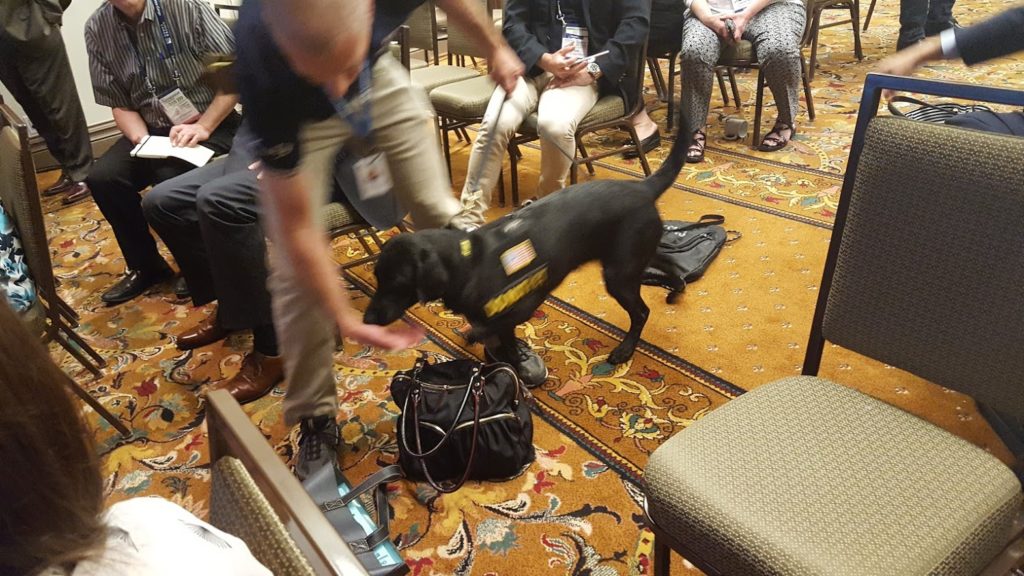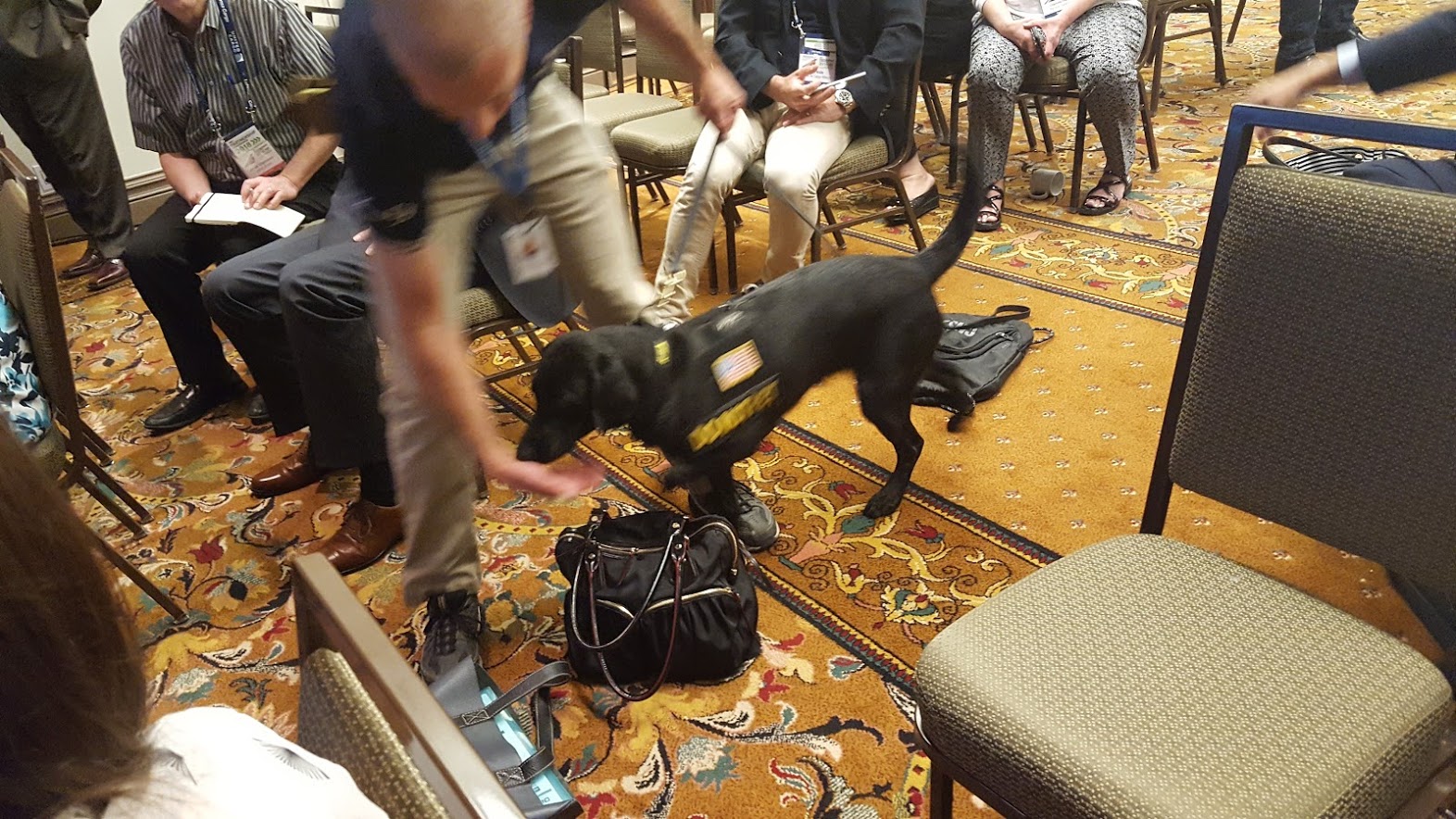TSA ruling may allow dogs to give air cargo a sniff

PALM SPRINGS, CALIF. May 10 2018 – When you think of the future of air cargo security, high-tech innovations like blockchain, the internet of things (IoT), and “Star Wars”-era laser beams may come to mind. But yesterday, Jennifer Haigh, manager of cargo screening and business development from K2 Solutions, Inc., advocated that man’s best friend, the canine, is still unbeatable when it comes to cost and efficiency in cargo-screening security.
In March, the U.S. House of Representatives signed off on legislation that will permit the Transportation Security Administration (TSA) to hire “third-party [security] canines to be used as a screening option within the cargo environment,” said Haigh, during a session at the CNS Partnership Conference. “The industry has been heavily involved, from handlers to certifying companies, the airlines and everybody else – it’s giving everybody the capability to give their input into what’s going in this program.”
The approval of this this measure, which comes after years of issues surrounding feasibility and funding for the TSA to regulate third-party procedures, sprang from a shortage of canine teams for use of cargo security, due to their preoccupation with providing safety screening for passenger flights. The legislation is expected to increase carriers’ abilities to utilize the service as a security option, while demand for airfreight soars.
As of now, Haigh said the TSA is finalizing the development of its evaluation standards for third-party canine security companies, like K2 Solutions, and is farming out the task of evaluating canine security companies, as well. “It’s going to allow everybody across the board to get things moving a little bit quicker,” Haigh said.
Haigh advocates the use of canine security in the cargo environment because it improves operational efficiency and trumps more expensive methods of screening cargo in terms of cost and accuracy, as a dog’s nose can detect dangerous substance in the single-digit parts-per-billion range.
“These dogs have the ability to [go] through and screen pallets and warehouses in a matter of minutes,” she said. “Think of the efficiency of putting a dog and a handler into that environment and not having to worry about, ‘Is this system going to work?’ or ‘How many people do we have to bring into play now that we have equipment?’”
The latter half of the presentation consisted of CEO of K2 solutions Lane Kjellsen conducting a live demonstration with one of the company’s dogs, “Pepper,” to show how the dog would work in a “single purpose detection” role. Audience members placed their bags and backpacks in the center aisle – one of the bags, placed by Kjellsen, containing a small amount of basic black gunpowder.
Unfortunately, Pepper had some trouble identifying the bag containing the substance in the first demonstration, and needed a little assistance in identifying the bag, which she finally “alerted to” by lying on top of it.
But Pepper redeemed herself in the second demo, in which Kjellsen had audience members line up to simulate a real-life airport scenario. Pepper, who specialized in this kind of passenger screening quickly identified the individual holding the substance and eagerly alerted.
She was rewarded with a cherished tennis ball.
Air Cargo World




